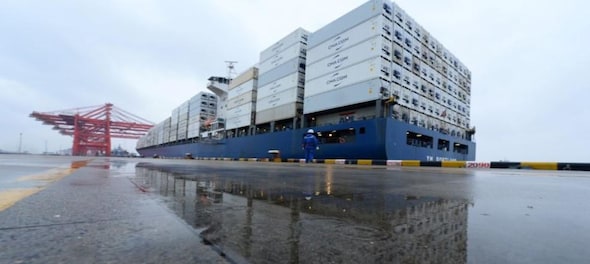
China is expected to report on Friday that economic growth slowed to its weakest in nearly three decades in 2019 amid a bruising trade war with the United States, and more stimulus steps are expected this year to help avert a sharper slowdown.
While recent data have pointed to some signs of improvement in the ailing manufacturing sector, and a newly-signed Sino-US trade deal has helped lift business confidence, analysts are not sure if the gains can be sustained.
Analysts polled by Reuters expect the economy to have grown 6.0 percent in the October-December quarter from a year earlier, unchanged from the previous quarter’s pace, which was the slowest since the first quarter of 1992, the earliest quarterly data on record.
For the whole of 2019, growth is expected to slow from 6.6 percent in 2018 to 6.1 percent — the weakest since 1990 — and cool further to 5.9 percent in 2020, a separate Reuters poll showed, reinforcing views that Beijing will roll out more stimulus measures.
Policy sources have told Reuters that Beijing plans to set a lower economic growth target of around 6 percent this year from last year’s 6-6.5 percent, relying on increased infrastructure spending to ward off a sharper slowdown.
China will release its fourth-quarter and 2019 gross domestic product (GDP) data on Friday (0200 GMT), along with December factory output, retail sales and fixed-asset investment.
Data on Tuesday showed China’s exports rose for the first time in five months in December and by more than expected, with imports also beating estimates, signalling a modest recovery in demand as Beijing and Washington agreed to de-escalate their prolonged trade war.
Underlining the pinch caused by the trade war, growth of China’s exports slowed to just 0.5 percent last year from a near 10 percent gain in 2018, reflecting falling US sales.
The United States and China signed a partial trade deal on Wednesday that will roll back some tariffs and boost Chinese purchases of US products. But most of the tit-for-tat levies imposed by the two sides over the past 18 months remain in place and a number of thorny issues are unresolved, raising the risk of a renewed flareup in tensions.
Challenges Ahead
This year is crucial for the ruling Communist Party to fulfil its goal of doubling GDP and incomes in the decade to 2020 and turning China into a “moderately prosperous” nation.
Ning Jizhe, head of the National Bureau of Statistics, has said that gross domestic product is expected to approach 100 trillion yuan (11 trillion pounds) in 2019, with per capita GDP surpassing $10,000 for the first time.
Growth of about 6% this year could be enough to meet the long-term goal, but policy insiders say Chinese leaders will have to ensure the annual expansion of 5%-6% in the next several years to overcome the so-called “middle-income trap”, where incomes rise to a certain level then stagnate.
Beijing has been relying on a mix of fiscal and monetary steps to weather the current downturn, cutting taxes and allowing local governments to sell huge amounts of bonds to fund infrastructure projects.
Banks also have been encouraged to lend more, especially to small firms, with new yuan loans hitting a record 16.81 trillion yuan ($2.44 trillion) in 2019. But the economy has been slow to respond, and investment growth has been stuck at record lows.
The central bank has banks’ reserve requirement ratios (RRR) - the amount of cash that banks must hold as reserves - eight times since early 2018, most recently this month, alongside modest cuts in its key lending rate.
Analysts polled by Reuters expect further cuts in RRR and key interest rates this year. But Chinese policymakers have repeatedly said they will avoid unleashing the kind of massive stimulus used in past downturns, which quickly juiced growth rates but left a mountain of debt.
Check out our in-depth Market Coverage, Business News & get real-time Stock Market Updates on CNBC-TV18. Also, Watch our channels CNBC-TV18, CNBC Awaaz and CNBC Bajar Live on-the-go!


BJP's Hindi heartland dominance faces test in phase 3 polls
May 2, 2024 9:14 PM
Lok Sabha Election: Re-elections at a Ajmer booth after presiding officer misplaces register of voters
May 2, 2024 4:54 PM

